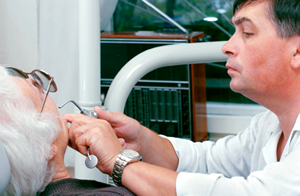South Ogden
What Types of Gum Grafts Are There?
Gum grafts serve several useful purposes. They can help a person suffering from gum recession. Gum recession can lead to many other problems.
They can also help people who want to improve their smile. Depending on the needs of the individual the type of gum graft can vary. There are a few types that the dental professional can turn to help their patient get what they want.

Four Types of Gum Grafts
When it comes to gum grafts, there are 4 types that oral surgeons typically turn to.
- Connective Tissue – This is the most common type of gum graft. This graft utilizes connective tissue that the oral surgeon removes after creating a flap in the palate or roof of the mouth. That tissue is then sutured to the receding gum tissue to cover any exposed roots.
- Free Gingival – During this graft the surgeon takes tissue directly from the roof of the mouth without creating the flap. It is a technique that works best for thinner gums and when there is a need to make the gums larger.
- Pedicle – This graft utilizes tissue around the tooth that needs repair. After cutting a flap the tissue is pulled down to cover the exposed root and is then sutured in place.
- Allograft – This type of gum graft utilizes tissue donated human tissue. The donated tissue is then sutured to the exposed root.
The good thing is that all these techniques for a gum graft work. They are effective methods to combat the problems associated with gum recession and can all improve the appearance of the individual.
The success or failure of the gum grafts depends on the condition of the gums before the graft and the care that you give after the graft. If the gum recession is the result of poor oral habits, the grafts will not work if the habits are not improved.
For more questions about gum grafts, take a moment and contact our office to schedule an appointment.

